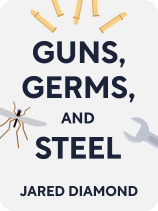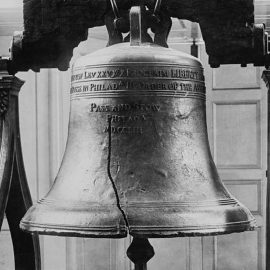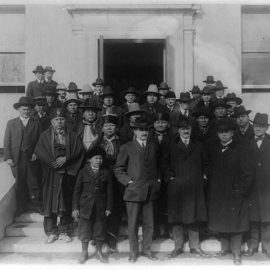

This article is an excerpt from the Shortform book guide to "Guns, Germs, and Steel" by Jared Diamond. Shortform has the world's best summaries and analyses of books you should be reading.
Like this article? Sign up for a free trial here .
Can an epidemic be a good thing? What factors lead to the development and spread of infectious diseases in Eurasia? How did Eurasians become dangerous to the rest of the world?
In his book Guns, Germs, and Steel, Jared Diamond discusses how epidemic diseases were a blessing in disguise for Eurasian societies. Over time, Eurasians became immune to certain deadly diseases and were eventually able to wipe out entire populations without using physical weapons.
Keep reading for the history of infectious diseases in Eurasia, and how it may have saved its population.
The Advantage of Epidemic Diseases
For those encountering epidemic microbes for the first time, the results are often deadly. However, if a person has survived previous exposure, they typically have some level of immunity to the disease. Therefore, societies that had the chance to develop immunities to epidemic diseases had a significant advantage over those that didn’t.
Such societies could unwittingly wipe out a population of previously unexposed people without ever wielding a weapon, thereby clearing the way for new settlements on once-occupied land. For example, according to Diamond, archaeologists estimate that the population of the Americas declined by as much as 95% in the years following Columbus’s arrival—much of this was due to the spread of diseases such as smallpox. Thus was the history of infectious diseases in Eurasia.
(Shortform note: Recent estimates indicate that the population of the Americas declined by 90% after the arrival of Europeans (who carried numerous epidemic diseases with them, including typhus and smallpox). The population loss was approximately 10% of the total world population at the time. Experts believe that the magnitude of this loss—and the accompanying reduction in farming—led to a period of global cooling as unmanaged land became overgrown and began absorbing more carbon.)
Factors That Contributed to the Development and Spread of Infectious Diseases
Why did societies in Eurasia harbor so many infectious diseases that worked to their advantage? Diamond suggests that the reasons are again linked to food production—namely, living close to domesticated animals and other humans.
As Eurasian societies incorporated more animals into their growing, sedentary, food-producing towns and cities, they spent more time in close contact with those animals and with each other. This was the perfect breeding ground for disease.
(Shortform note: Specialists observe that the first major epidemic diseases, such as measles and smallpox, emerged among human populations in cities of around 10,000 to 20,000 residents. They note that cities of this scale were established in Eurasia long before they were established in other places, and suggest—in agreement with Diamond—that the practice of food production accounted for these denser populations.)
According to Diamond, scientists discovered that the major infectious diseases of recent history—including smallpox, tuberculosis, malaria, plague, measles, and cholera—have microbial ancestors that still infect common farm animals, such as pigs and cows. At some point in history, they believe, these microbial ancestors transferred from animals to humans, allowing humans to contract diseases that were previously exclusive to livestock.
(Shortform note: Experts note that the likelihood that an animal disease will pass to a human depends on four factors: First, the number of possible animal hosts; second, the percentage of those animals infected; third, how often humans encounter those infected animals; fourth, the genetic similarity between the animal and the human. Taking these factors into account, it becomes clear that the domestication of mammals—which involved gathering them in large groups and interacting with them often—increased the odds that humans would become infected by those animals.)
Once a microbe transfers from an animal host to a human host, it can begin to spread among the human population. When people live in relatively close proximity, this is easy. Diamond argues that Eurasian towns and cities, organized as they were around agriculture, provided numerous opportunities for diseases to spread among the population. Not only did people live and work close to one another, but they also used animal and human waste as fertilizers for their crops.
(Shortform note: Many microbes never manage to spread widely among humans. Experts find that a pathogen’s ability to spread efficiently between humans depends on its ability to find new ways to transfer from one host to another. New practices often create these opportunities. In ancient times, these new practices included fertilizing with manure and living close to humans and domestic animals. Today, blood transfusions, injections, antibiotic resistance, and commercial food production offer numerous opportunities for pathogens to develop new ways to infect hosts.)
Eurasians, therefore, had many opportunities to be infected by these microbes, says Diamond—epidemics were common throughout their history. After an epidemic wiped out a large portion of a society, people that survived tended to have genetic features that made them immune to the microbes that caused the epidemic. Thus, the Eurasian survivors and their children were largely protected from these deadly infections by the time they encountered the inhabitants of other continents, though they would still get sick from the microbes periodically.
(Shortform note: Immunity had devastating consequences not only for the conquest of the New World, but also for the early American colonies. Experts believe Eurasians had immunity to temperate diseases (such as smallpox and measles) because of their long history with them but that they were susceptible to tropical diseases, including yellow fever and cholera. Historians contend this affected the economics of slavery in America. They argue that slavery in the southern US was more profitable than in the northern US partly because enslaved Africans were less susceptible to the tropical diseases that thrived in the warm American South. By contrast, in the North, enslaved Africans succumbed to temperate diseases in the colder climate.)
In this way, Eurasians acted as vectors, carrying with them microbes that could no longer kill them but could easily kill those without immunities. Eurasians’ germs went ahead of them, hitching a ride on explorers’ ships and landing on the shores of the Americas and isolated islands, wiping out entire civilizations without any armed conflict.
(Shortform note: Researchers have found that the health of the pre-Columbian Americans (before contact with Europeans) was significantly declining long before Europeans arrived. While they insist that this doesn’t change the fact that Europeans transferred numerous epidemic diseases to the Native Americans, it does indicate that there were other factors contributing to population decline in the New World. Specifically, researchers see a correlation between the Native American adoption of agriculture and declining health—farming wasn’t as healthy as hunting and gathering.)

———End of Preview———
Like what you just read? Read the rest of the world's best book summary and analysis of Jared Diamond's "Guns, Germs, and Steel" at Shortform .
Here's what you'll find in our full Guns, Germs, and Steel summary :
- An in-depth look into why societies historically took different paths
- The environmental factors that affected the historical development of those societies
- Why Eurasians had strategic advantages over non-Eurasians






